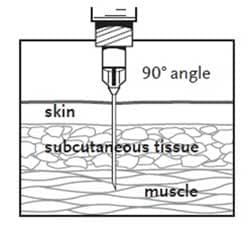Administering HPV Vaccine
Dosage and Schedule
CDC recommends routine vaccination of preteens at ages 11 or 12 years. The vaccination series can be started at age 9 years. HPV vaccine may be given at the same time as other vaccines.
HPV vaccination is administered as:
- A two-dose series (0, 6-12 months) for most persons who initiate vaccination at ages 9 through 14 years
- A three-dose series (0, 1-2, 6 months) for persons who initiate vaccination at ages 15 through 45 years, and for immunocompromised persons.
| Recommended number of doses | Recommended dosing schedule | Population |
|---|---|---|
| 2 | 0, 6–12 months* | Persons initiating vaccination at ages 9 through 14 years, except immunocompromised persons |
| 3 | 0, 1–2, 6 months** | Persons initiating vaccination at ages 15 through 26 years, and immunocompromised persons initiating vaccination at ages 9 through 26 years; three-dose schedule also applies to adults initiating vaccination at ages 27 through 45 years. |
Footnotes
* In a two-dose schedule of HPV vaccine, the minimum interval is 5 months between the first and second dose.
** In a three-dose schedule of HPV vaccine, the minimum intervals are 4 weeks between the first and second dose, 12 weeks between the second and third dose, and 5 months between the first and third dose.
Vaccine Information
Only 9-valent HPV vaccine (Gardasil 9) has been available for use in the United States since late 2016.
| 9-valent HPV vaccine (Gardasil® 9) | |
|---|---|
| Manufacturer | Merck |
| Year Licensed | December 2014 for males and females |
| HPV types protected against by vaccine | HPV types 6, 11, 16, 18, 31, 33, 45, 52, and 58 |
| Adjuvant in vaccine | AAHS: 500 μg amorphous aluminum hydroxyphosphate sulfate |
| Recommended for… |
|
| Contraindicated for… |
|
The 9-valent HPV vaccine protects against HPV types 16 and 18, which cause about 66% of cervical cancers and most other HPV-attributable cancers in the United States, and five additional cancer-causing types, which account for about 15% of cervical cancers. It also protects against HPV 6 and 11, which cause most anogenital warts.
For more information on immunization schedules, see the Child and Adolescent Immunization Schedule and the Adult Immunization Schedule.
Preparation for Administration

Immunization Action Coalition
- Shake well before use. Thorough agitation immediately before administration is necessary to maintain suspension of the vaccine.
- Do not dilute or mix with other vaccines.
- After thorough agitation, HPV vaccine is a white, cloudy liquid.
- Inspect the product visually for particulate matter and discoloration prior to administration.
- Do not use the product if particulates are present or if it appears discolored.
For full instructions on dosage preparation, see the 9-valent HPV vaccine package insert.
Vaccine Administration Site
HPV vaccines should be administered intramuscularly in the deltoid region of the upper arm or in the higher anterolateral area of the thigh. The preferred site of administration is the deltoid region of the upper arm. Do not administer this product intravenously, intradermally, or subcutaneously.